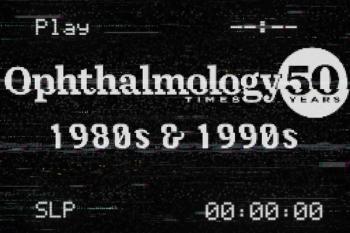
Irregular corneas pose challenges for toric IOLs
By Laird Harrison
Surgeons must carefully consider the etiology of any irregular astigmatism when deciding on treatments, according to Thomas Kohnen, MD.
"Irregular astigmatism can pose a significant challenge for all of us," said Dr. Kohnen, professor and chairman, Department of Ophthalmology, Goethe University, Frankfurt, Germany.
The most widely used premium intraocular lens (IOL) is a toric lens for treating astigmatism, Dr. Kohnen said. However, the way these lenses can be used depends on whether the patient's astigmatism is regular or irregular.
"Against the rule, with the rule, and oblique astigmatism can be very easily corrected with toric lenses," he said.
Irregular astigmatism causes
Examples of causes of irregular astigmatism include forme frustra keratoconus, post-myopic LASIK, post-hyperopic LASIK, and penetrating keratoplasty, Dr. Kohnen said.
"Patients with irregular astigmatism desire the best vision possible and spectacle independence," he added.
To achieve that, Dr. Kohnen pointed out that physicians should keep in mind the differences between corneal and lens astigmatism, internal and external astigmatism, anterior and posterior astigmatism, pre-operative and postoperative astigmatism, astigmatism in the IOL plane, and astigmatism in the spectacle plain.
Until recently, researchers have dismissed the differences between astigmatism of the anterior and posterior corneal surfaces because of the small differences between the indices of refraction between the two, and the limited options for measuring the differences, Dr. Kohnen said.
Today, new measurement capabilities are leading to studies on these differences. In three large studies, the mean magnitude of corneal posterior astigmatism was about -0.3 D, he added.
"When you look at the anterior surface, you have to distinguish between anterior with the rule, anterior against the rule, and anterior oblique," Dr.Kohnen said. "But this does not go in alignment with posterior astigmatism."
Astigmatism classifications
Dr. Kohnen classified irregular astigmatism into ocular pathologies (keratoconus, pellucid marginal degeneration (PMD), and dry eye syndrome), postoperative (such as keratoplasty), and trauma.
Patients can have corneal astigmatism because of dry eye syndrome (DES). "(This has) to be treated before surgery,” Dr. Kohnen said. “This helps the outcome particularly in premium IOL lenses when we go to presbyopia corrections."
Post-penetrating keratoplasty astigmatism is particularly significant and difficult to treat because the irregularities are all over the cornea, he said. Conservative treatments for irregular astigmatism include spectacles and contact lenses.
Corneal procedures include ablative approaches (LASIK and photorefractive keratectomy [PRK]), limbal-relaxing incision (LRI), and add-ons such as intrastromal corneal ring segments (e.g., Intacs, Addition Technology).
Phakic IOLs for irregular astigmatism include monofocal toric IOLs with small apertures and multifocal toric IOLs. There are also add-on pseudophakic IOLs.
Which patients might benefit most from a toric IOL and which might need a surgical procedure is "a question which is asked worldwide," said Dr. Kohnen.
"Maybe for toric, we start with 1.5 D and above and for limbal relaxing, 0.75 D and above," Dr. Kohnen said. "But for the future, I still see a trend that goes more in the direction of toric lenses because they are more stable."
Sagittal/posterior maps
Dr. Kohnen provided an example of a patient whose total corneal refractive power showed an interaction between the sagittal and posterior maps. In one eye, the SimK astigmatism was 2 D, while the total corneal refractive power was 2.1 D.
The second eye had a SimK astigmatism of 0.1 D on the anterior surface and the posterior surface had a total corneal refractive power of 1 D. "So there comes the distinction between these two measurements," said Dr. Kohnen.
Summarizing, Dr. Kohnen advised physicians to pay attention to whether astigmatism is regular or irregular in their patients, to factor in posterior corneal astigmatism, to measure total corneal refractive power, and consider the toricity of the IOL.
"Figure this out with your own results," Dr. Kohnen said. "Monitor them. And, of course, don't underestimate the effect of astigmatism with multifocal IOLs."
Looking ahead, Dr. Kohnen predicted that small-aperture IOLs will play an increasingly important role. "It takes a lot of the aberrations away and might be the future for treating very irregular corneas," he added.
Thomas Kohnen, MD
This article was adapted from a presentation Dr. Kohnen delivered at the 2017 American Academy of Ophthalmology meeting. Dr. Kohnen has financial relationships with Abbott; Alcon Laboratories; Carl Zeiss Meditec; Geuder; Hoya; Johnson & Johnson Vision; Oculentis; Oculus Optikgeräte; Santen; SCHWIND eye-tech-solutions; STAAR Surgical; TearLab; Thea Pharma; and Thieme Compliance.
Newsletter
Don’t miss out—get Ophthalmology Times updates on the latest clinical advancements and expert interviews, straight to your inbox.






















































.png)


